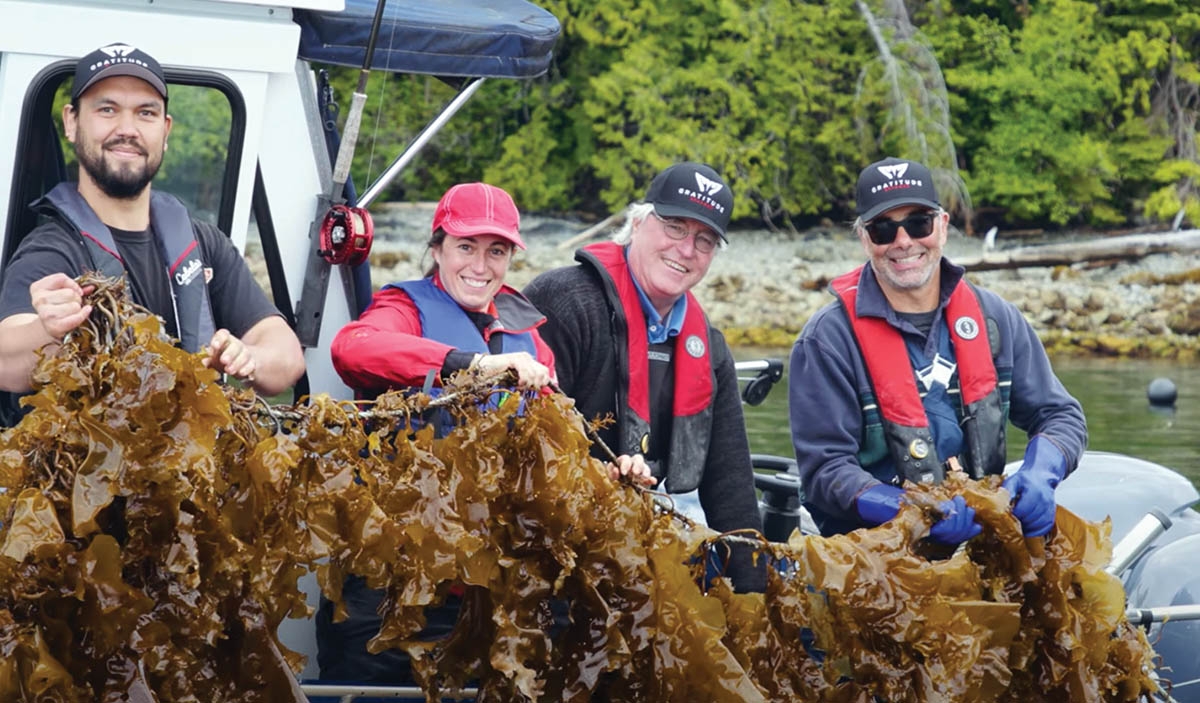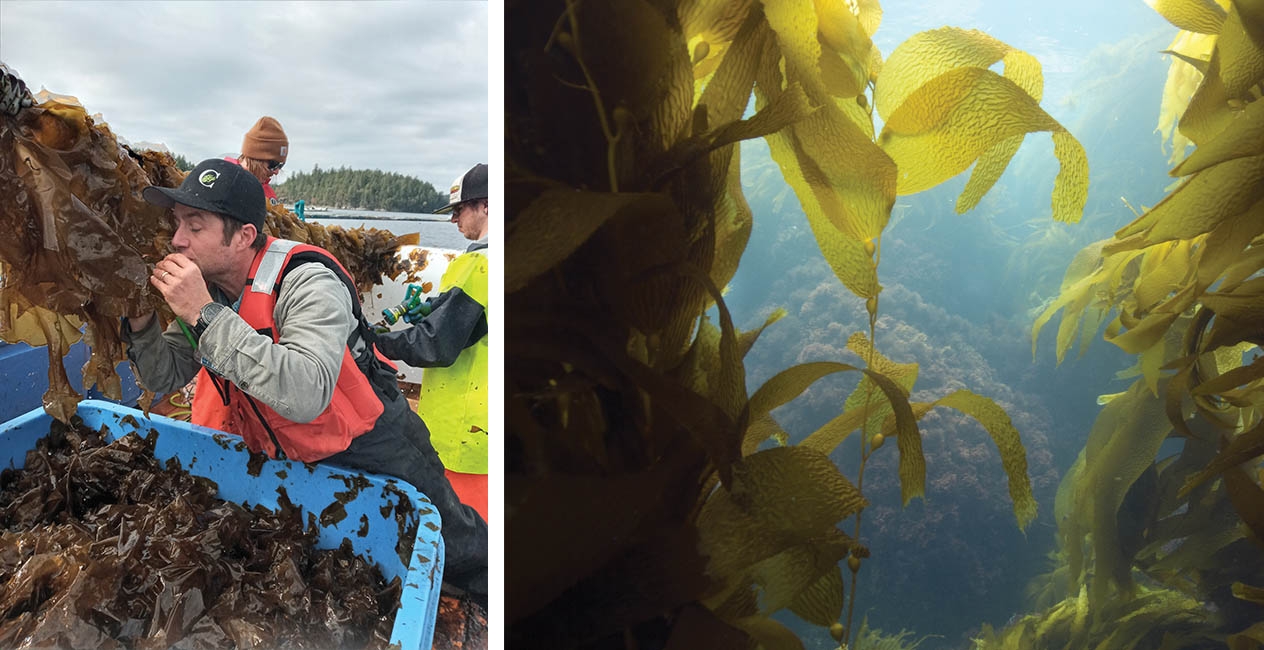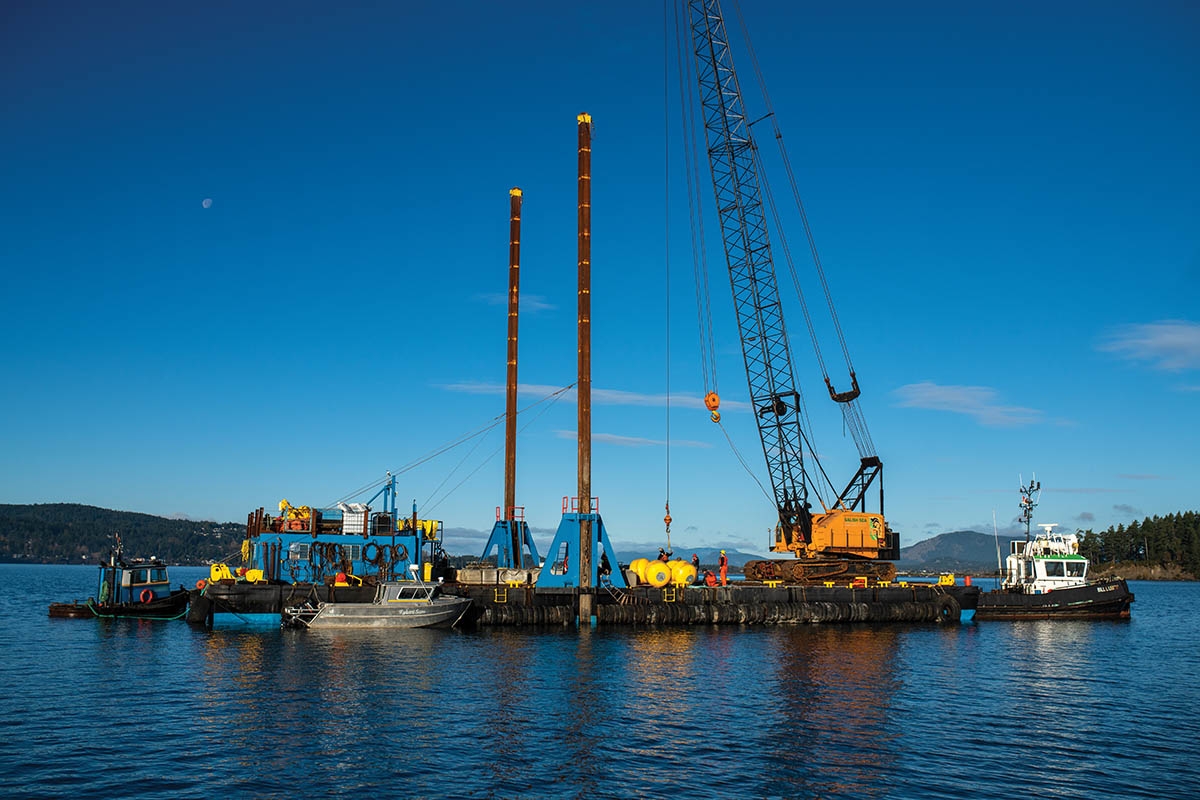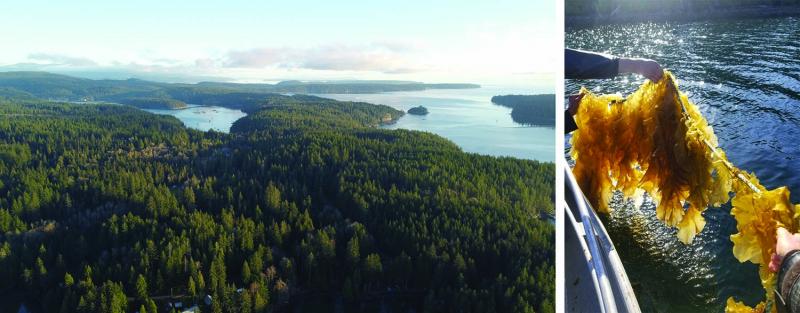
True reconciliation in action on BC’S coast
ABOVE: Ryan Cootes, Erin Bremner Mitchell, Bill Collins, and Mike Williamson at a Cascadia Seaweed harvesting site in Barkley Sound, BC.
Along the pristine coastline of British Columbia, the ocean is inspiring opportunities to address food security, climate action and Indigenous reconciliation. Together, BC First Nations are partnering with Cascadia Seaweed to produce jobs and economic diversification for coastal communities.
Since the Industrial Revolution, the sea has absorbed more than 25 per cent of emitted carbon–the largest carbon sink on the planet. The ocean presents an untapped, abundant resource for climate action to benefit people and the planet.
The ocean’s superpower? Seaweed. Its resumé is extensive: it can form biodegradable packaging, feed cows, and reduce their methane emissions; regenerate marine ecosystems, create biofuel, and absorb carbon.

ABOVE: Matt Obee, VP of Operations, tasting freshly harvested seaweed.
Ocean cultivated seaweed uses nutrients from the sea, and requires no freshwater, fertilizers, pesticides, or arable land to grow. It presents an opportunity to create thousands of new green jobs along Canada’s coasts and directly supports the development of Canada’s growing Blue Economy. Seaweed cultivation is the definition of regenerative aquaculture.
Seaweed is also a superfood. For thousands of years, coastal Indigenous communities have used seaweed as a nutritious food source: a complete protein packed with vitamins and minerals. By 2050, the World Bank Group estimates the global seaweed industry will generate USD$28 billion per year and supply close to 10 per cent of the world’s food stores.
In short, seaweed improves the ocean environment in which it grows; the more it is cultivated, the more our economy prospers, while the healthier the ocean and our climate become.
The Tsawout First Nation, located on the Saanich Peninsula on Southern Vancouver Island, recognize the economic, environmental, and social opportunities of seaweed cultivation. 170 years after signing the Douglas Treaty, the nation is exercising their Indigenous rights to their land and waters. In a historical alliance, the Tsawout issued Cascadia Seaweed a license to cultivate seaweed within their territorial waters and on their behalf–a new wave of benefits for the coastal community and climate.
“Tsawout First Nation has a profound and sacred relationship with the land and sea,” says Chief Harvey Underwood. “As Saltwater People, we have an obligation to care for and respect the land for each other and for future generations.”

ABOVE: Barges and boats from the James Island farm installation.
First Nations, like the Tsawout, can help make this possible by enacting their rights to self-govern, defined by the Douglas Treaty, the Canadian Constitution, and the United Nations Declaration on the Rights of Indigenous Peoples (UNDRIP).
“We need to prepare for the future and manage our own traditional lands, air and sea,” explains Chrissy Chen, Fisheries Manager at Tsawout First Nation. “As First Nations stewards, we need to pass on the rich ecological knowledge of our ancestors to ensure that economic activities taking place in our marine environment are safe and sustainable.”
“We are Indigenous People,” Chen continues. “We are here to conserve and protect the environment while we produce food and create opportunity for our people.”
The partnership is creating jobs while advancing reconciliation. Cascadia Seaweed, founded in 2019, is already North America’s largest ocean seaweed cultivator, with seven farms installed in five different territories. Cascadia urges other industries to walk alongside First Nations through partnerships that further those Nations’ interests.
“Our Nation partners have utilized one of their biggest assets–the titles they hold to the land,” explains Bill Collins, Chairman of Cascadia. “[This] opportunity for a prosperous future, in harmony with nature, is realized by people sitting down together and creating innovative solutions to promote outcomes that put people and planet first,” he says. “First Nations governments and their industrial partner, in this case Cascadia, have walked together to provide the model. This should inspire other governments and industrial partners to follow suit.”
These partnerships not only mend relations between peoples but with the earth. Today, Cascadia Seaweed joins Tsawout Nation as stewards of the coast and climate.
“This,” says Collins, “Is true reconciliation in action.”
To learn more about Cascadia visit their them at, www.cascadiaseaweed.com










